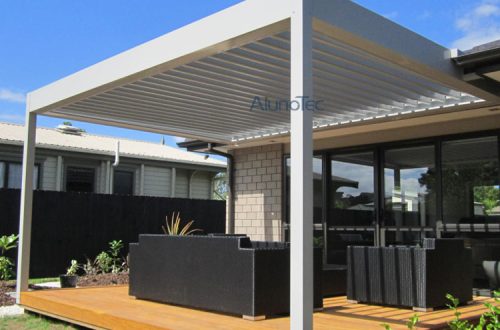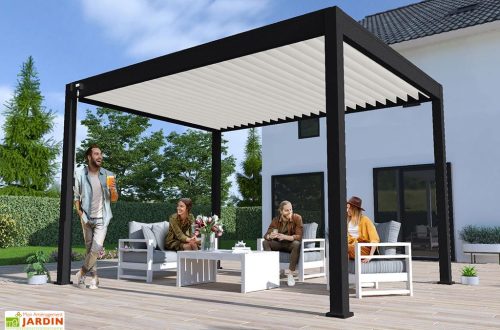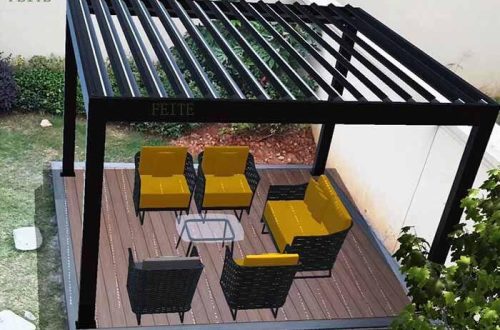Agricultural Shade Cloth
Agricultural Shade Cloth

Agricultural shade cloth is a highly reflective knitted screen made from high-density polyethylene (HDPE). It reduces the amount of sunlight passing through while allowing plants to grow quickly and maximize photosynthesis. The reflective metalized material is UV stabilized for re-use and contains aluminum woven into the fabric. In this article, we’ll discuss the many benefits of this type of screen. To learn more about its uses, read on.
Agricultural shade cloth is a reflective metalized high-density polyethylene (HDPE) knitted screen
Agricultural shade cloth is a lightweight, reflective polyethylene knitted screen that is used to provide protection from the sun and heat. Available in densities ranging from 30% to 90%, shade cloth offers superior ventilation and light diffusion. It also helps keep greenhouses cooler, which reduces energy costs. To learn more, check out some of the applications for shade cloth. Here are some examples.
High-density polyethylene shade fabric is durable and resistant to harsh climates and impacts. Its wide service temperature range means it can be used in harsh climates. HDPE begins to soften at 80°C and melts at 115°C. Agricultural shade cloth is also UV stabilized. It is available in 30 – 70% shade levels, depending on the fabric.
The choice of shade net colour is dependent on many factors. A lighter colour will reflect more sunlight, reducing heat and oxidation. White shade cloth will decrease harsh light and allow diffused light to penetrate the canopy. This will speed up plant growth. Agricultural shade cloth can be customized for your needs. The ASTM-certified products come in various sizes. And you can even purchase custom-made aluminet shade cloth to reduce the costs of manufacturing.
It reduces sunlight transmission while still allowing for rapid plant growth and optimal photosynthesis
While many greenhouse crops perform exceptionally well under full outdoor sun, their growth is affected by shade. Shade is provided to regulate temperature, not to reduce the amount of light reaching the plants. During periods of high light, plants are particularly susceptible to heat stress, which may result in both acute and chronic damage. Heat stress causes a plant to close its stomata to keep its leaves cool, which results in an abrupt increase in temperature.
It is UV stabilized to promote reuse
UV stabilized agricultural shade cloth is a lightweight, durable, anti-aging, and environmentally-friendly material that provides up to 90% shading. This material is ideal for a variety of agricultural uses, including aquaculture and agricultural crops. Shade net is a great choice for outdoor spaces, including lawn seeding and playgrounds. Its thicker version, GardenQuilt, is made of polypropylene fibers and can withstand temperatures of up to 24 degrees Fahrenheit. It can also protect plants from temperature fluctuations, which are common during planting, fruit maturation, and flowering. This material can be used over a wide area and is easy to install. It can be folded or tied to secure it in place.
Agricultural shade cloth is available in different densities. Different plants require different amounts of shade, and the correct density should be determined by the climate of the area in which it is placed. Vegetables and fruits need about 30-60% shade, while flowers and other plants that require shade need as much as seventy-five percent. It is important to choose the appropriate shade cloth for the area in which you live. In northern Australia, for example, summer temperatures are often higher than those in the southern part of the country.
It has aluminum woven into the fabric to reflect UV light
Agricultural shade cloth can be bought in many different sizes and is ideal for greenhouse and outdoor uses. Its mesh fabric allows air to flow and blocks about 20% of sunlight. It absorbs heat quickly and releases it quickly, keeping things beneath cool. It comes in a variety of colors, including white, black, and metallic aluminum. The following are some of the benefits of using shade cloth.
Agricultural shade cloth with aluminum woven into the fabric is used in greenhouses because it prevents plant oxidation and protects them from frost radiation. Aluminum shade cloth has insulating qualities that keep plants cooler in the shade than in the open air. It also keeps out insects and pests. Furthermore, it provides optimal light to plants and is inexpensive to deploy. However, further improvements are needed to make it more efficient.
Agricultural shade cloth with aluminum woven into the fabric has many benefits. Unlike traditional black shade cloth, it produces a cooler shade environment. Aluminet’s unique weave pattern helps moderate daytime and nighttime temperatures. It helps greenhouses achieve a more uniform microclimate, regulating air movement. It also provides the optimal diffused light to crops. In addition to these advantages, Aluminet can help reduce nighttime heating expenses. In addition, the reflective fabric prevents frost damage to plants.
It improves light diffusion
Agricultural shade cloth has a number of benefits. It can reduce energy costs while increasing plant productivity. Its high light diffusion percentage can be customized to meet plant needs. To achieve the best results, the shade cloth should be installed at a height that prevents it from touching the ground or hanging over end walls. Listed below are just some of its benefits. Learn how it can increase plant productivity and quality! Agricultural shade cloth is a great way to boost the overall look and feel of your growing environment.
Polypropylene shade cloth has a number of benefits. It is durable and water-resistant. It is easy to install and remove and can be stored during off-peak seasons. Its open-lockstitch design reduces wind speed and prevents excessive heat buildup. It is also UV-resistant and resistant to detergents and chemicals. The material is durable and requires minimal sewing. However, it does not have the best light diffusion properties, which could lead to fading or discoloration.
It improves cooling in sweltering summers
Agricultural shade cloth can help you extend your growing season by providing protection from the late afternoon sun and letting in light. Most vegetables require at least six hours of sun exposure each day to grow optimally. The shade cloth structure is often double-duty, acting as a frost shield and frost fence. This article will explain how agricultural shade cloth can improve cooling during sweltering summers.
External shade cloth’s cooling efficiency is affected by the energy balance between the greenhouse’s environment and the greenhouse’s surroundings. In a greenhouse, the absorption of solar energy raises the temperature of the cloth, making it a radiator and increasing the radiation load on the environment below. The result is heat transmitted without benefit from useful photosynthetic active radiation. Agricultural shade cloth’s cooling efficiency improves when the temperature is lower than the surrounding air.
The temperature of the summer is so high that livestock can easily become stressed. In addition to humans, livestock are vulnerable to heat stress. According to livestock specialist Dr. David Fernandez, dark clothes absorb more heat than lighter ones. Light colors can help hide dark skin underneath. This makes summers more comfortable for both the livestock. So, if you are planning to invest in agricultural shade cloth, you can be sure that it will improve cooling during sweltering summers.
It can be used for greenhouses
There are several different types of glass for your greenhouse. The most durable, light-transmitting choice is glass. While glass is heavier and more expensive than other types of plastic, it will also last a lot longer than other materials. Polycarbonate is lightweight and relatively cheap, but doesn’t offer the same advantages as glass, including a longer lifespan. It is not as flexible as glass, however, and is not recommended for domed greenhouses.
There are several benefits to greenhouse plastic sheeting. For example, it is ant-drip, so condensation is not a problem. Otherwise, condensation can wreak havoc on the moisture balance in the greenhouse and introduce mold. It is also six millimeters thick, so it is unlikely to puncture easily. It also has excellent UV resistance, making it last much longer than polyethylene sheeting. It’s also durable, yet lets sufficient light through to the plants.
The most obvious benefit is reduced condensation. Condensation can cause a greenhouse to get hotter than it needs to be, thus reducing light transmission. The downside is condensation can also promote disease. CoolMax’s IR properties help raise the temperature inside the greenhouse, but it doesn’t block sunlight like clear poly sheet does. Nonetheless, plastic sheeting is still an excellent choice for greenhouses and is inexpensive.
It can be used for livestock
There are many benefits to using shade cloth for livestock. It is an efficient way to regulate the temperature of cows. The benefits of livestock shading are numerous, and they can be beneficial to other animals as well. A recent study by Eigenberg et al., in the Journal of Animal Science, compared the effectiveness of various types of livestock shade cloth in different climates. Several companies now manufacture livestock awnings to provide shade for a variety of purposes.
Livestock shade structures come in two basic styles: portable and permanent. The former is portable and is generally made of steel pipe and wood. The latter is usually made from polypropylene fabric to provide 80 percent shade. Shade structures are designed to provide adequate shade for livestock during the day and at night. They can also prevent animal waste deposition near the surface of the water. Portable livestock shade structures are preferred, as they can be moved from one location to another.


